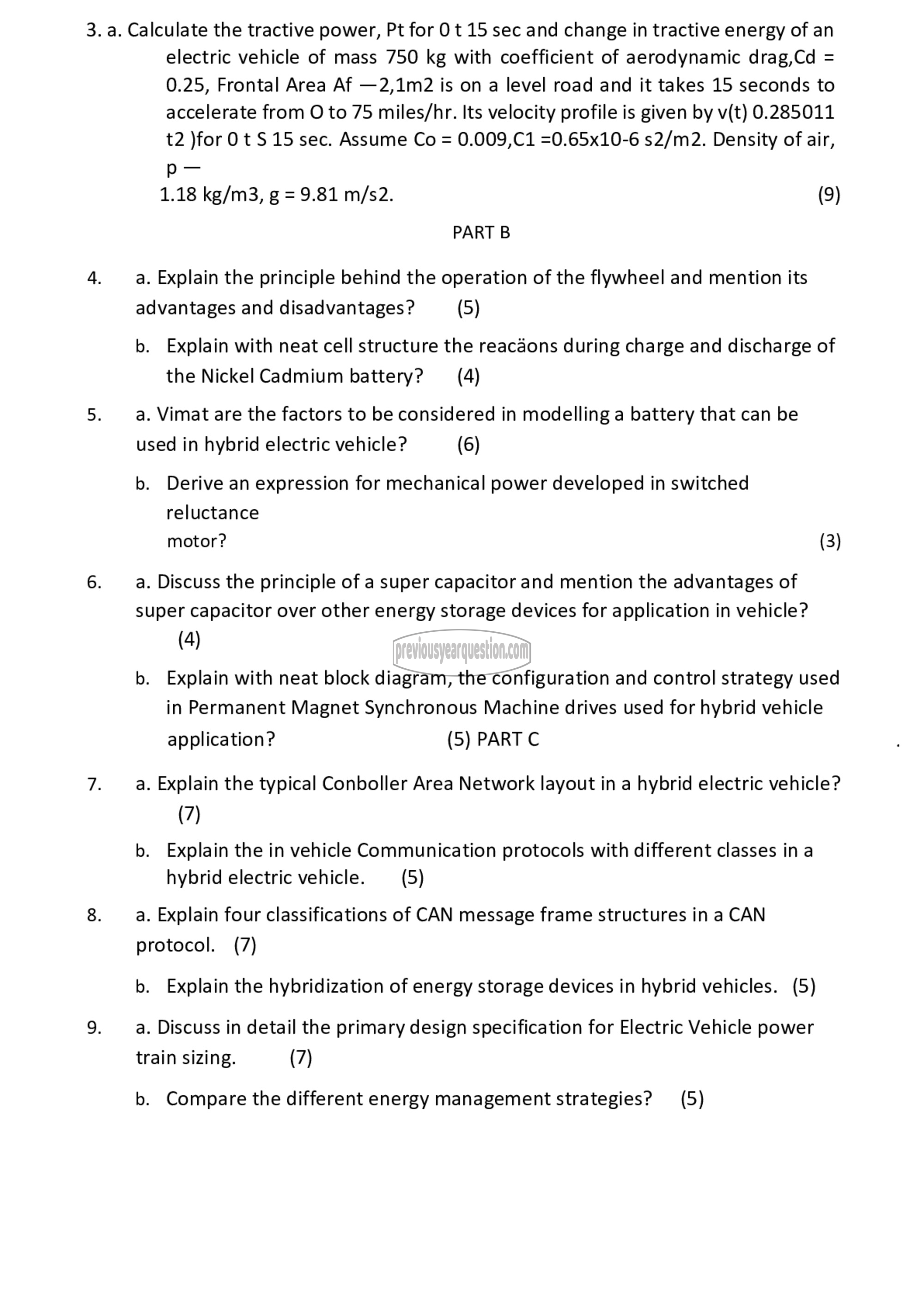APJ ABDUL KALAM TECHNOLOGICAL UNIVERSITY Previous Years Question Paper & Answer
Semester : SEMESTER 3
Subject : Hybrid Electric Vehicles
Year : 2018
Term : DECEMBER
Branch : CONTROL SYSTEMS
Scheme : 2015 Full Time
Course Code : 01 EE 7315
Page:2
3. a. Calculate the tractive power, Pt for 0 t 15 sec and change in tractive energy of an
electric vehicle of mass 750 kg with coefficient of aerodynamic drag,Cd =
0.25, Frontal Area Af -- 2, 112 is on a level road and it takes 15 seconds 1௦
accelerate from O to 75 miles/hr. Its velocity profile is given by v(t) 0.285011
12 )for 015 15 sec. Assume Co = 0.009,C1 =0.65x10-6 s2/m2. Density of air,
ام
1.18 kg/m3, ع = 9.81 m/s2. (9)
PART B
4. 3. Explain the principle behind the operation of the flywheel and mention its
advantages and disadvantages? (5)
b. Explain with neat cell structure the (6808005 during charge and discharge of
the Nickel Cadmium battery? (4)
5. a. Vimat are the factors to be considered in modelling a battery that can be
used in hybrid electric vehicle? (6)
b. Derive an expression for mechanical power developed in switched
reluctance
motor? (3)
6. ഒ. Discuss the principle of a super capacitor and mention the advantages of
super capacitor over other energy storage devices for application in vehicle?
(4)
b. Explain with neat block diagram, the configuration and control strategy used
in Permanent Magnet Synchronous Machine drives used for hybrid vehicle
application? (5) PART C
7. ഒ. Explain the typical Conboller Area Network layout in a hybrid electric vehicle?
(7)
b. Explain the in vehicle Communication protocols with different classes in a
hybrid electric vehicle. (5)
8. 2. Explain four classifications of CAN message frame structures in a CAN
protocol. (7)
b. Explain the hybridization of energy storage devices in hybrid vehicles. (5)
9. 2. Discuss in detail the primary design specification for Electric Vehicle power
train sizing. (7)
b. Compare the different energy management strategies? (5)
